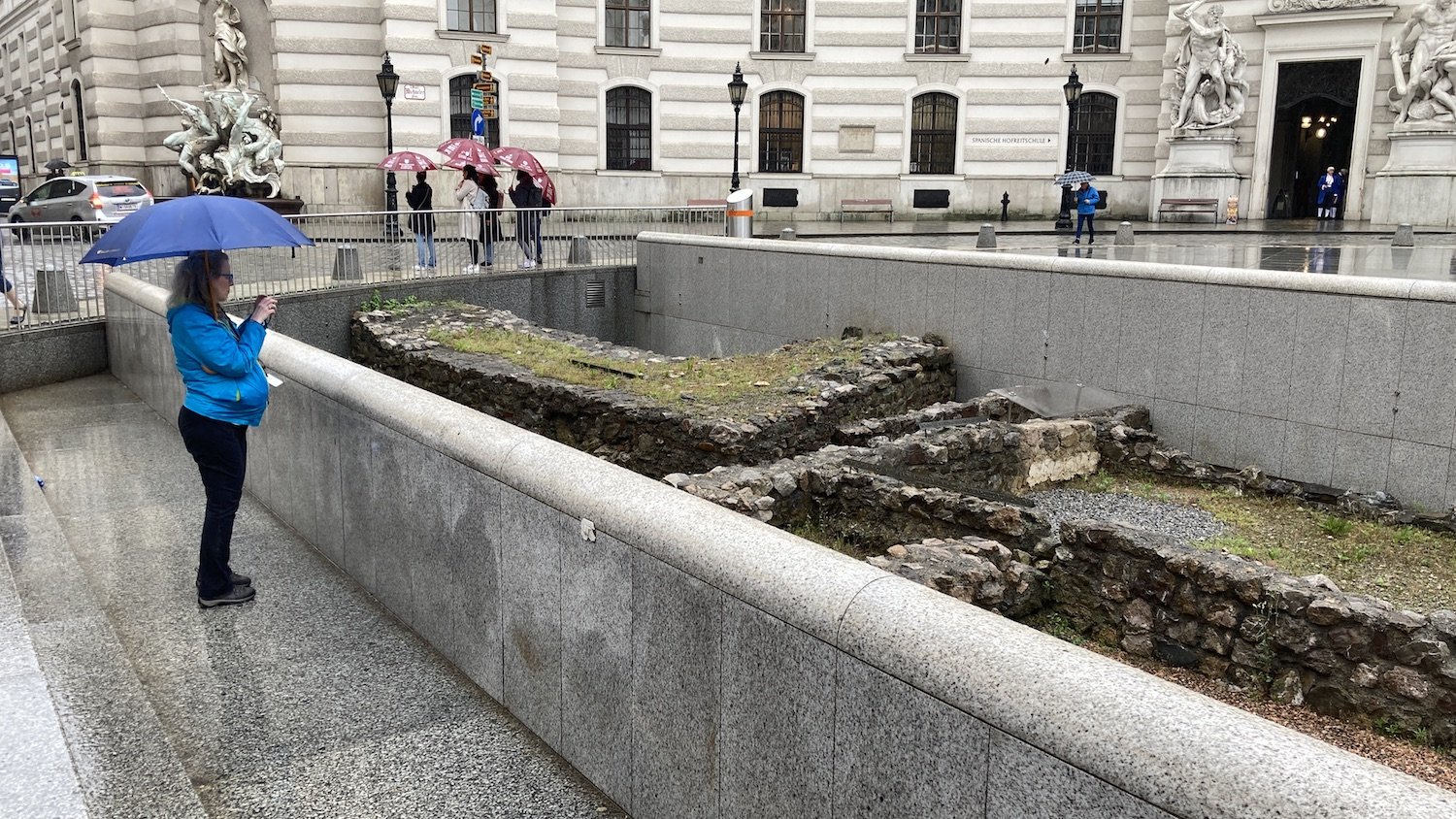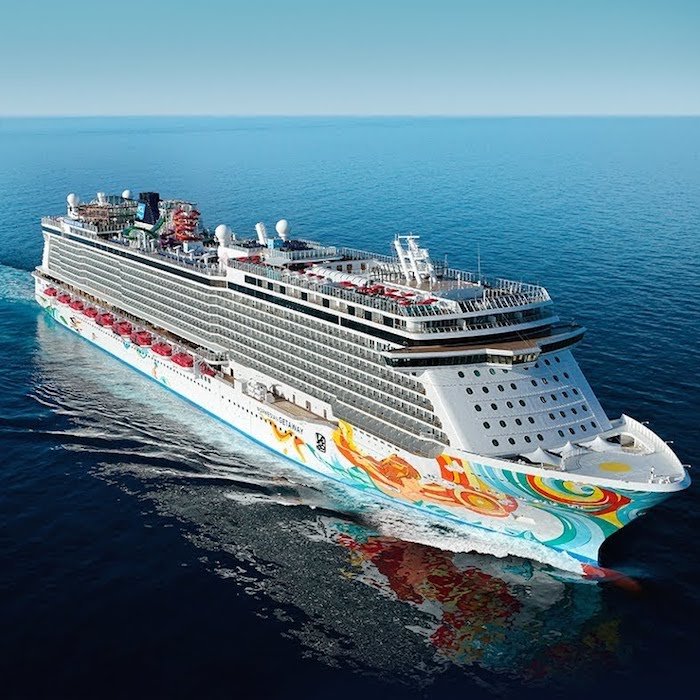We had two goals when we disembarked in Vienna: Roman ruins and a konditore. Three, if you count a refrigerator magnet.
Vindobona (circled) as it appears on the Tabula Peutingeriana. Image modified from here: https://www.researchgate.net/figure/Part-of-the-Tabula-Peutingeriana-showing-Vindobona-Vienna-Austrian-National-Library_fig4_338803385
The ruins come as no surprise to our regular readers. They know that the Danube River marked the limits or limes of the Roman Empire and that our cruise on the “Romantic Danube” was undertaken primarily to get a feel for this remote corner of biblical world. Forts were erected along the frontier in places like Passau (see our post here) and Mautern an der Donau (see our post here). Vienna finds a seat in this company. Long before the royal Habsburgs or the toe-tapping Strauss brothers made Vienna the vortex of swank, the modern capital of Austria was a soldier camp, a gritty outpost on the edge of the civilized world. Pliny the Elder calls it Vianiomina (Nat 3.27). Ptolemy the geographer lists it as Vindobona. The Roman road map known as the Tabula Peutingeriana (possibly derived from an early 1st century original) goes with the name Vindobona as well.*
Maximus commanding the Roman forces in the Battle of Vindobona. Image from here: https://medium.com/stoicism-philosophy-as-a-way-of-life/gladiator-examined-according-to-the-state-of-nature-war-8ca2950acf2b.
(While hardly proof of anything, it is also worth noting that Russell Crowe’s character in the film Gladiator opens with the Romans fighting German tribes in the Battle of Vindobona. We know this because the first time the condemned men stand in the Colosseum, Max asks, “Any of you ever serve in the army?” One answers: “I served with you at Vindobona!” It was cool moment that all Gladiator aficionados remember. Bet you liked it too, didn’t you?)
Having last visited Vienna in the more rustic age of 35mm slide film, I had some photographs of its Roman ruins, but nothing very usable.
On this return visit we found Michaelerplatz square near the Hofburg Palace. While most tourists were excited to smell the white Lipizzan ponies who do a horsey version of ballet, I was more anxious to reach a hole in the square where you can peer down on a lovely Roman wall. Here is one example of a digital upgrade to my photo library.
There would be no Vienna without Vindobona.
There are other Roman remains in Vienna too (the outline of the fort shapes the modern city), but we must move on.
Our interest in the konditore may not be as obvious to readers of Bible Land Explorer. The konditore is derived from the Latin word candire, which means “sweetness.” Establishments that carry this name in places like Germany, Austria, and Switzerland are bakeries that produce lovely cakes and chocolates and other goodies.
Our dear Vicki has been baking and marketing pies for the last year or so under the label “Mama Z’s Pies” (please see her webpage here: https://mamazspies.squarespace.com/). We had tried several bakeries in Germany and Austria looking for pie ideas and so far had found nothing. We were hopeful that Vienna, famous for its coffee and cakes, would be a game changer.
The Aïda in downtown Vienna.
Near St Stephens Cathedral we found what we were looking for: the Aïda. This café-konditore has achieved cult-like status as the place for Viennese sweets. Naturally our senses were overwhelmed by the colors and smells.
We perused the cabinets. There were breads and muffins and cheesecake and Sachertortes and strudels but nothing that resembled American pie. We were stunned! We saw nothing in Germany, Austria, or Hungary that sported a gooey filling and a flakey crust.
They don’t say “As American as apple pie” for nothing.
In the end we settled on coffee, a slice of cheesecake and a slice of blueberry-vanilla cake. It was light, fluffy, and exquisite. It was fantastic even. But it sure wasn’t pie.
And then to top it off, we forgot to shop for a magnet.
Vienna has it all. Well, almost everything.
Could there be a market over here for Mama Z?
We aim to return to the Mediterranean Sea in September of 2023. From the port of Athens, we will depart for Ephesus and Patmos, then sail for the Holy Land. There, we disembark for day trips to Jerusalem and the Galilee. Following these experiences, we return to Greece, via ports in Cyprus—Limmasol and Paphos—and the spectacular volcanic island of Santorini. Onboard lectures give focus to life in the biblical world. English-speaking guides will meet us at each port. We partner with Norwegian Cruise Line for a “mid-sized ship” with a “bigger experience.” For more details click the link here.








